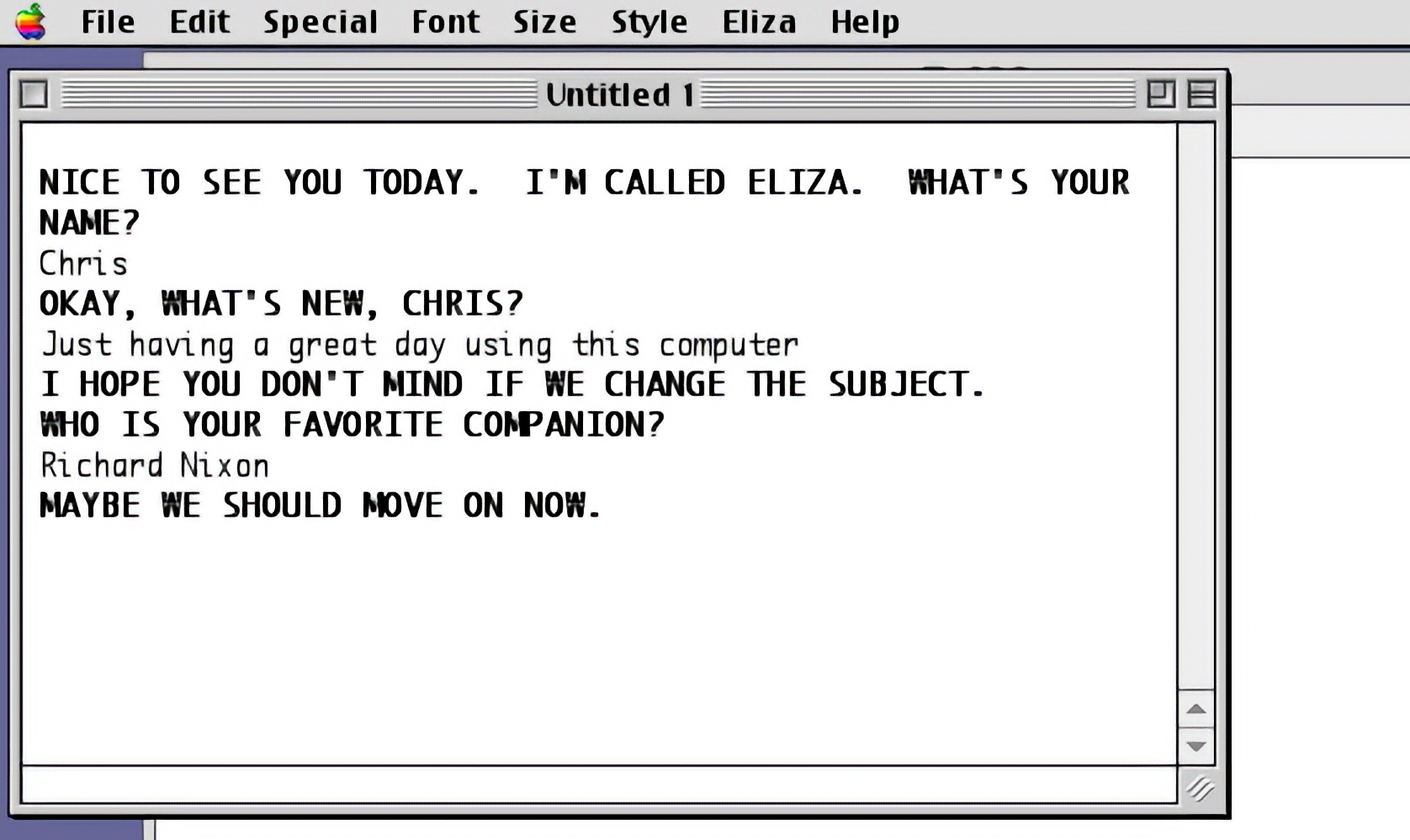Recalling the Classic ELIZA on Macintosh
Conversation with Your Macintosh
This week, let's take a trip down memory lane to explore ELIZA, one of the most fascinating programs ever created for the Macintosh, which carries a simplistic conversation in English. ELIZA is no ordinary application; it's a reproduction of the original program developed by Joseph Weizenbaum in the 1960s, considered one of the first interactive natural language processing systems that captivated the tech world.
The Origins of ELIZA
ELIZA was first introduced by Weizenbaum at MIT in 1966 and gained instant attention. It was designed to simulate a conversation between a user and a therapist. Weizenbaum was inspired to show how superficial human-computer interactions could be, and yet the experience intrigued early computer users. People knew they were interacting with a machine, but they still found themselves engaged in conversations with ELIZA, often feeling an emotional connection.
This original system was developed for the IBM 7094, and it wasn't until years later that it was ported to various platforms, including the Macintosh, where it continued its legacy.

ELIZA on the Macintosh
On the Macintosh, ELIZA found a perfect home. Early Mac users, already excited about the graphical user interface, were thrilled to discover that they could converse with their computers! The Macintosh version faithfully reproduced ELIZA's behavior, allowing users to engage in simple yet compelling conversations. By asking questions and giving non-directive responses, ELIZA could make it seem as though it was genuinely listening to your problems.
Why ELIZA Matters in the World of Natural Language Processing
Though basic by today's standards, ELIZA laid the groundwork for modern natural language processing (NLP) systems. It was the first program that made people realize the potential of conversational agents?a concept that's now everywhere, from virtual assistants like Siri and Alexa to chatbots and AI-driven customer service tools.
The simple brilliance of ELIZA comes from how it uses pattern-matching to respond in ways that appear meaningful. It didn't actually understand what the user was saying, but it created an illusion of comprehension. This effect, called the "ELIZA Effect," is still studied today in the field of AI.
Running ELIZA Today
For those looking to relive the nostalgic days of conversing with a computer therapist, ELIZA can still be found on certain retro Mac emulators. If you're a vintage Mac enthusiast or just curious to see how natural language processing began, it's worth tracking down. It's a great reminder of how far we've come in our interactions with machines.
Final Thoughts
Though the world of artificial intelligence has evolved dramatically since the 1960s, ELIZA remains an iconic program that marked the beginning of conversational computing. For many Mac users, it was a fun and intriguing way to interact with their computer, but it also laid a critical foundation for the future of human-computer communication.
As you go about your daily work on the Macintosh, remember that ELIZA helped shape the evolution of the interactions we now take for granted. If you haven't had a conversation with ELIZA, it's worth experiencing a little piece of computing history!
